| Japanese | English |
We have received a lot of questions from users of DSSF3 about the basic measurement procedure of the car audio systems. There are various ways for testing the audio systems, but it depends on the purpose of the measurement and the kind of systems. Here, I briefly introduce a most basic way of diagnosing my car audio system.
Before a measurement, we need an audio check CD, in which various test signals (e.g. pink noise, sine waves, sweep, and so) are recorded. If you don't have such a CD, you can make it by yourself by using Realtime Analyzer's signal generator and sound recorder. Test signals are reproduced from a CD deck, and its output is captured by a microphone installed inside the car.
First is the most basic check. Feed a 1kHz sine tone to the left channel of the system, and check if it is heard from the left channel speaker. Do the same test for the right channel. It sounds apparent, but sometimes the speakers are connected to the wrong channels. If it is OK, feed a stereo signal with the same amplitude, and check if it sounds from the center of two speakers. If the sound does not come from the center, volume balance may be wrong, or some strong reflections may exist near the speaker. Also, speakers' phase should be checked. See this application note: Speaker phase check
Then, feed a 1kHz sine tone with a different volume and check its output. Listen to the sound and check if it has any abnormality, such as hum and other kind of noise, and distortion. To measure it objectively, use the Spectrum analyzer to see the frequency characteristics, and use the oscilloscope to see the temporal waveform. It is OK if only 1kHz tone appears on the measurement screen. If you have any problems, check your system carefully, especially the cable, connection, and so.
Next, test a 400Hz sine tone. This is a test for mid range. Continue the test for the higher frequencies, such as 5kHz and 10kHz. Finally, test a very low frequency, such as 40 Hz. This may be a severe test. If you clear all the tests, I can say you are using a good audio system.
Even if the test results are terrible, it is not a problem of the system itself, but a problem of the installation in many cases. It is possible to improve your system by adjusting it carefully.
From here, original report written in 2002
The first time is the measurement of Ferrari V8 engine sound. The measurement reported in this page was done by using the sound measurement software DSSF3.
Idling sound: ![]() cars21.wav (44.1kHz / Stereo / 8sec / 1,379KB)
cars21.wav (44.1kHz / Stereo / 8sec / 1,379KB)
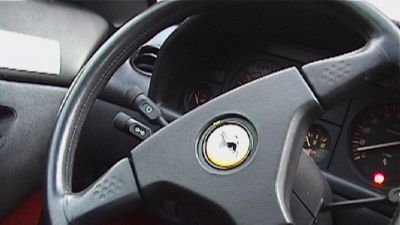
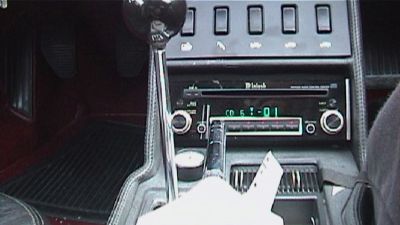
| Date | 2002/2/26 4:00 p.m. |
| Place | Chikara-machi, Higashi-ku, Nagoya city, Aichi prefecture |
| Weather | Fair weather (Air temperature 13 degree Celsius, Humidity 52%) |
| Measurement device | Personal computer: SONY VAIO PCG-R505R/DK Video camera: SONY DCR-PC3-NTSC Stereo microphone: Audio Technica AT9450 |
| Measurement object |
1991 model Ferrari Mondial t Engine: Longitudinal, mid-mounted 90° V8, light alloy cylinder block and head Bore & Stroke: 85 x 75 mm Compression Ratio: 10.4:1 Max. Power Output: 300 bhp at 7,200 rpm; 88 bhp/litre Transmission: Dry, twin-plate clutch, 5-speed gearbox + reverse, ZF limited-slip differential Steering: Rack and pinion, servo assist. Length x Width x Height: 4535 x 1810 x 1235mm Dry Weight: 1,426 kg (coupe) Fuel Tank: 96 litres Top Speed: 255 km/h |
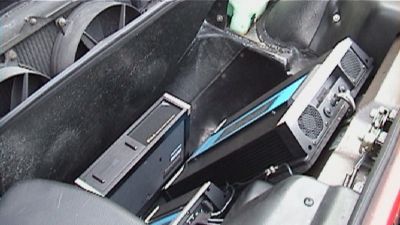
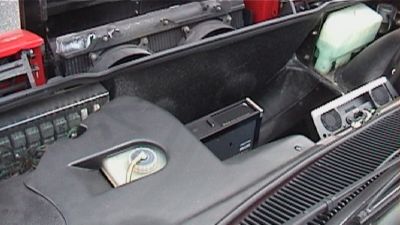
MX4000 Head Unit
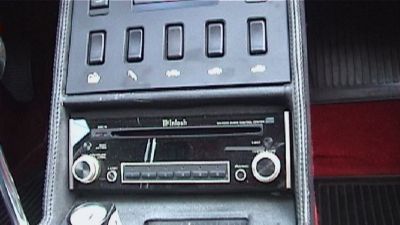
MC431 Power Amplifier
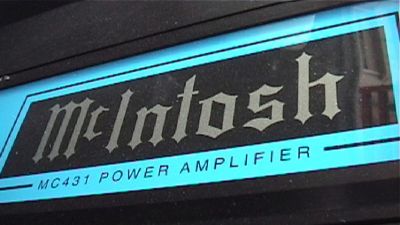
MD4000 Digital to Analog Converter
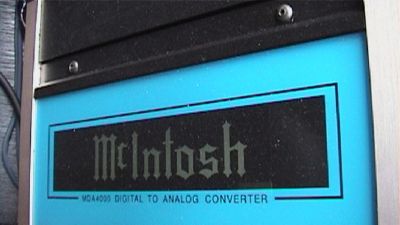
MCD4000 Compact Disk Changer
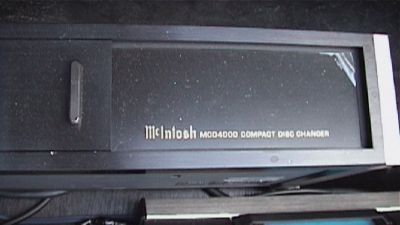
Loudspeaker (genuine goods)
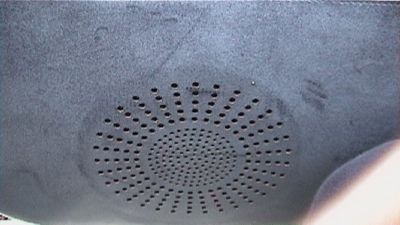
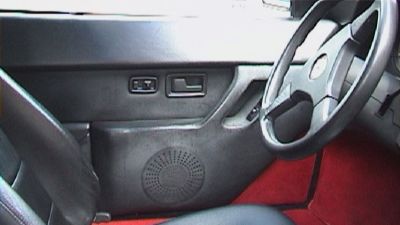
Music CDs used for the test
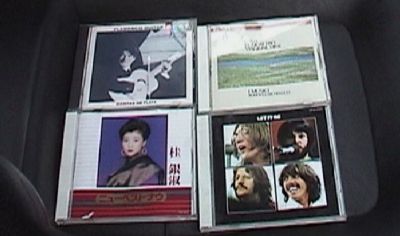
PHILIPS PHCP−10101
Vivaldi's Collection of concertos Opus 8. The four seasons.
Ensemble
Violin
The background noise outside a car is 58dBA when the engine is suspended. Noise
inside the car is between 36 and 39 dBA when the engine is suspended and doors
are shut.
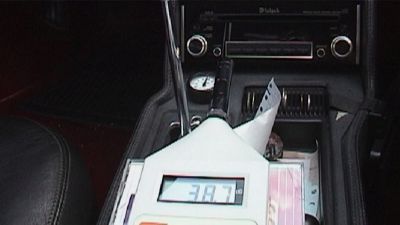
1/3 octave analysis by the Realtime
Analyzezr.
Although the sound of a motor is detected, it can be disregarded since it is a
small sound.
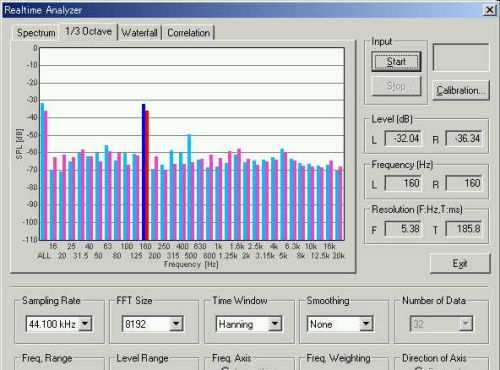
The real-time display of the autocorrelation function
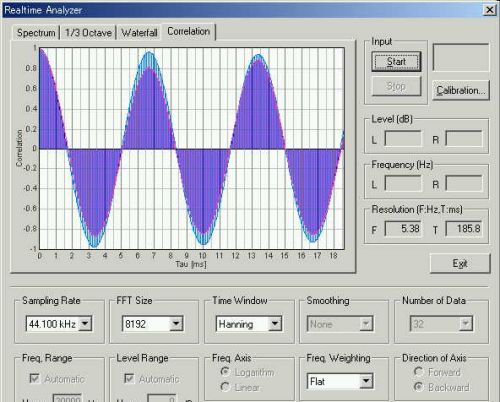
3D display of the power spectrum.
In the quiet car, the motor sound of a video camera turns into noise.
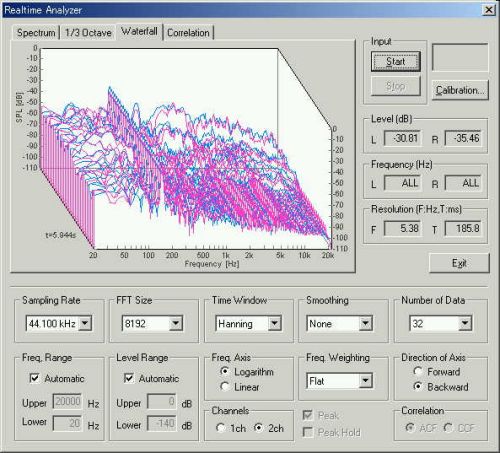
The level difference of 10dBA is required between the background noise and
the measured sound. Probably, it is satisfactory, since the motor sound of a
camera is the range of 36-39dBA and the sound to measure (car engine sound) is
60-80dBA.
Noise inside the car is between 61 and 63 dBA during the idling, doors are shut.
The sound of a video camera cannot be heard.
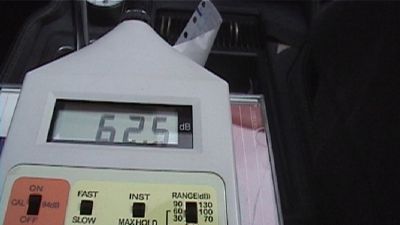
Measurement of idling engine sound.
1/3 octave analysis
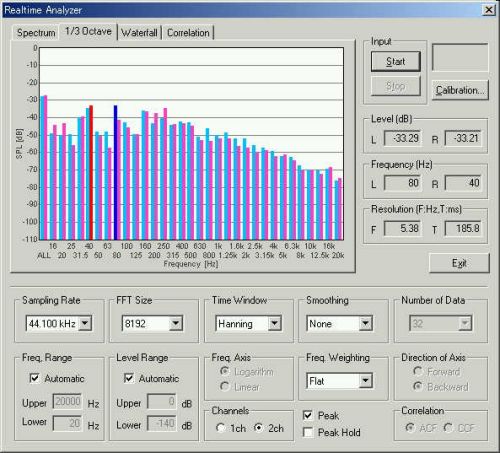
The system is ready in the effective range of the maximum of 90 dBA.
The real-time display of the autocorrelation function.
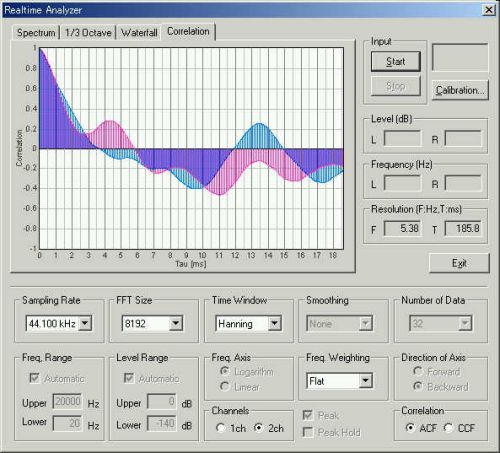
3D plot of the power spectrum
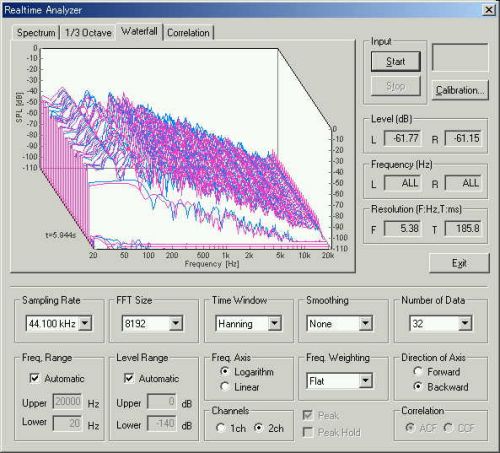
Running ACF is measured with integration time of 0.2 seconds for the sound
lasting about 8 seconds. Since it is the large amount of calculation, the
measurement data for 8 seconds takes about 3 minutes for calculation.
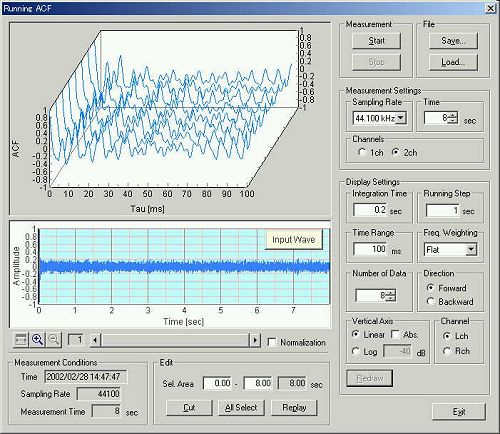
The data is saved, and then analyzed by the SA (Sound Analyzer).
February 2002 by Masatsugu Sakurai